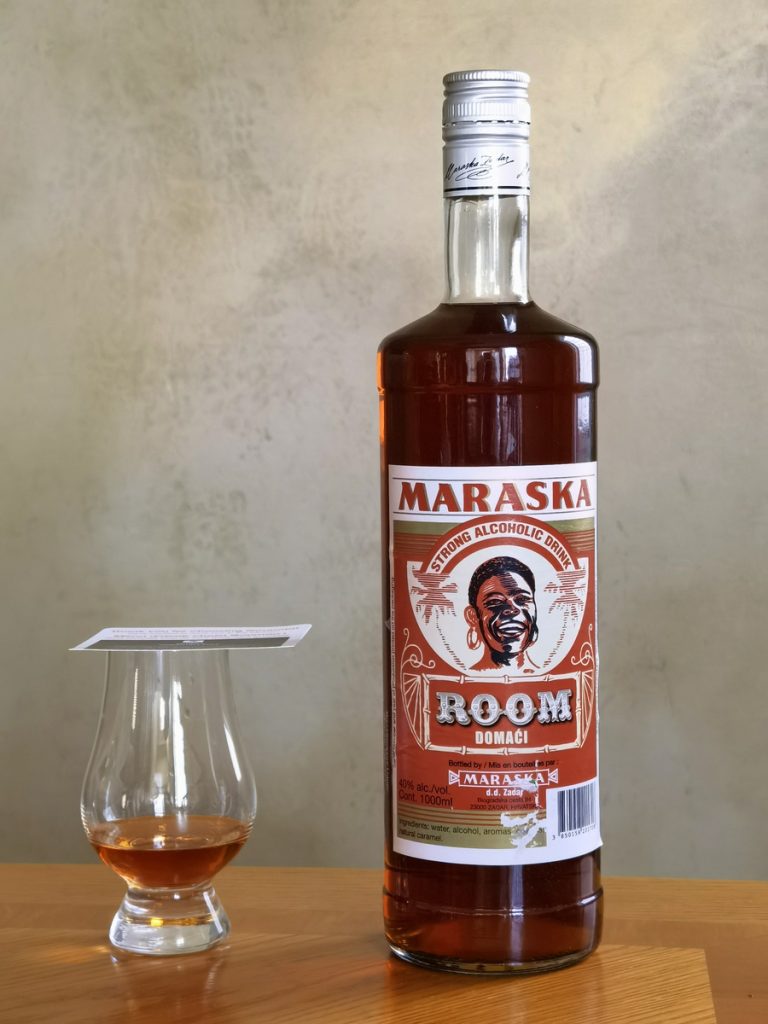 Historically speaking, and indeed even in our times, there are alcoholic spirits out there that stretch the borders, let alone the definitions, of “rum”. Yet I continue to seek out, look for and try these things, whether they are almost unknown indigenous cane juice rums, proto-rums from Asia, or the old verschnitts and spirits of their ilk made in Eastern Europe in the 19th and 20th century. Such bottlings — for example the Badel Domaci (Croatia), Casino 50 (Hungary) or the Tuzemak (Czech Republic) — exert a curious fascination, a compelling kind of pull. In a way they speak to the alcoholic history of their countries, their indigenous liquors, their likes, their companies, their markets, and inform us as to how rums (in any form, by any name) permeated countries, provinces, principalities, kingdoms, or whole empires that had no colonies or tropical connections.
Historically speaking, and indeed even in our times, there are alcoholic spirits out there that stretch the borders, let alone the definitions, of “rum”. Yet I continue to seek out, look for and try these things, whether they are almost unknown indigenous cane juice rums, proto-rums from Asia, or the old verschnitts and spirits of their ilk made in Eastern Europe in the 19th and 20th century. Such bottlings — for example the Badel Domaci (Croatia), Casino 50 (Hungary) or the Tuzemak (Czech Republic) — exert a curious fascination, a compelling kind of pull. In a way they speak to the alcoholic history of their countries, their indigenous liquors, their likes, their companies, their markets, and inform us as to how rums (in any form, by any name) permeated countries, provinces, principalities, kingdoms, or whole empires that had no colonies or tropical connections.
These are getting rarer now, as the EU expands and its standards define rum more rigorously and precisely (though still, argue many, with too many loopholes allowing substandard hooch to sneak through), and the old spirits made from neutral alcohol or unaged rum stock or whatever, leavened with some high ester Caribbean rums, fall outside the ringfence. Nowadays they cover themselves with the onomatopoeic “room” instead of “rum” and the best that can be said about that is that it dates the product – in this case, it’s clear it was made (or at least bottled) after 2013 when Croatia entered the EU.
There are no references to what constitutes the Maraska Room. Wes Burgin, writing the only review to be found online, bought a bottle in 2015 on a trip to Eastern Europe and remarked without attribution — but probably correctly — that it was made from neutral alcohol or vodka doctored with rum essences, which is to say spices, flavourings, caramel and what have you. The bottle I bought in Canada (don’t ask me how it ever got here – but it was the last one on the shelf) explicitly states its ingredients as “alcohol, water, aromas, natural caramel and [something else]” …the label on the bottle is torn making the last unreadable. It sports a metal foil cap of the sort we see less of all the time, and I just give thanks that it’s not an old-style Russian version, which were designed never to close again so you had to drink the whole bottle. And it calls itself both a “room” and a “strong alcoholic drink” which is about as close to truth in labelling as we’re ever likely to get these days.
So let’s taste it and I’ll give you some more history below rather than extend this preamble even further.
Nose: Nail polish, vanilla, salt, vanilla, grapes, turned fleshy fruit. Sharp and rather medicinal with sour gummi bears dancing over the palate, plus glue and some rather indeterminate rumminess – molasses, leather, smoke, mauby, brown sugar, that kind of thing – behind it all. It smells rather candied, minty even, and resting on a bed of raw alcohol.
Palate: The confectionery parade continues with cotton candy, brown sugar and white chocolate thin, sharp and spicy. More than a hint of cherry or cranberry juice here, but also a little brine and olives, a touch of vanilla, and that thin medicinal thing refuses to go away. And it’s sweeter than it has any right to b, to be honest.
Finish: Short, aromatic, sweet, easy going. Mostly white chocolate, brine, cherries and a hint of florals and acetones.
If you know your rums, and especially if you’re more into the dosed types like Zacapa, Diplomatico, Dictador or Bumbu, or enjoy solera-style rums, then this will be of interest. However, it must be noted that you can taste a fair bit of artificiality here: the sweetness, thinness, sharpness and candy-like flavours are giveaways to the sort of additions disliked by many. Purists will find much to take issue with, while others might enjoy trying something off the reservation, made by an outfit with a fair bit of backstory, whose tradition is cherry brandies and liqueurs, not rums, and which probably brought that sensibility to this ersatz product.
What did I think? Not a whole lot. It’s tasty enough, and knowing it for what it is, I could have it after dinner one small snootful at a time. But of course the issue is that by setting itself up as a rum, even calling itself what it does, it immediately creates certain expectations and is judged by a certain set of standards. By those, it mostly fails and I think most rum lovers will try it only the once, just to say, like Wes and I did, that they have.
(#999)(69/100)⭐⭐
Maraska is a brand belonging a company in Croatia of the same name that makes fruit ands walnut brandies (slivovitz, with variations on the spelling), liqueurs, and of course the variations of the domaci (domestic) rums/rooms for which they are best known abroad and in Europe. The name of the company derives from the marasca cherry, a type of sour Morello cherry, the best flavours of which are supposedly grown in Dalmatia (part of Croatia). Brandy called Maraschino (also made into a liqueur) is made from such cherries, and has been a cottage industry in Dalmatia since the 14th century or earlier and distilleries were established in the town of Zadar at least since the 1700s. Over time the three largest and best known were the Salghetti-Drioli combine (also the oldest, founded in 1759), Luxardo (1821) and Vlahov (1861).
While the history of Maraschino (as a general term for the brandy) encompasses many brands and companies from Zadar aside from the three mentioned above, the one we are concerned with today is Luxardo which was established by Girolamo Luxardo, an Italian – the Dalmatian coast has long had influences from across the Adriatic by Italians from the great trading entrepots like Venice. Luxardo was soon exporting Maraschino to Europe, the Americas and Asia, their high quality brandy enhanced visually by hand-knitted coverings of the bottles, a tradition still in place today. Their liqueur won gold and silver medals at the second World’s Fair in Vienna in 1854 for example, and Zadar became the city most closely identified with the spirit as it increased in popularity.
Zadar transitioned to Yugoslav sovereignty after WWII, after variously being part of France, Italy and Austria. During the war it had been nearly destroyed by Allied bombing and all industry ceased, but after 1946, production facilities were rebuilt and distillation resumed. All remaining useable equipment (which had been confiscated from the old factories) was consolidated into a single enterprise called “Maraska Company Zadar” and located at the Luxardo’s old “Maraska” factory premises which had been built in 1911. It is now the most important liqueur producer in Croatia.
It makes both alcoholic and non-alcoholic drinks, sweets and various promotional products, and in the “strong drinks” category it features Empire Gin, Cosmopolitan vodka, Royal Brand brandy. St. Simon’s Light Rum (and underproof, supposedly from selected Caribbean distillates) and of course the Maraska Room at various strengths which is noted as being “traditionally used to prepare cakes, fruit salad, tea and other hot drinks in the winter,” and with no source distillate provided.
Other Notes
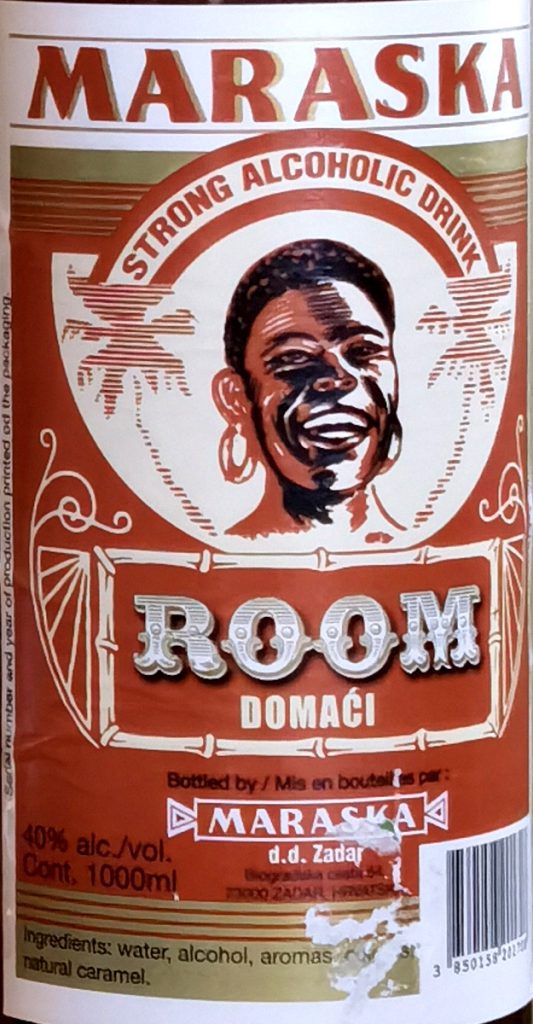

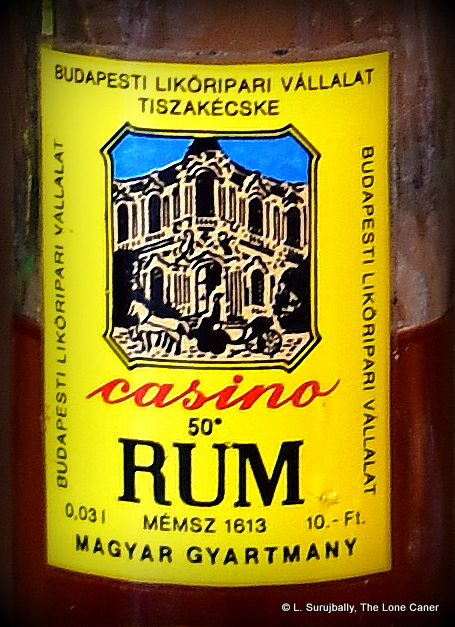 If we accept these data points, then of course the Casino is not, by all current definitions, a rum, and in point of fact, the entry might just as easily be listed in the Rumaniacs page since this version is no longer being made — the word “rum” was either replaced by “room” or dropped completely from the label when Hungary joined the EU in 2004, and that suggests a manufacture for the product I tasted of around 1988-2003 which actually makes it a heritage rum entry, but what the hell.
If we accept these data points, then of course the Casino is not, by all current definitions, a rum, and in point of fact, the entry might just as easily be listed in the Rumaniacs page since this version is no longer being made — the word “rum” was either replaced by “room” or dropped completely from the label when Hungary joined the EU in 2004, and that suggests a manufacture for the product I tasted of around 1988-2003 which actually makes it a heritage rum entry, but what the hell.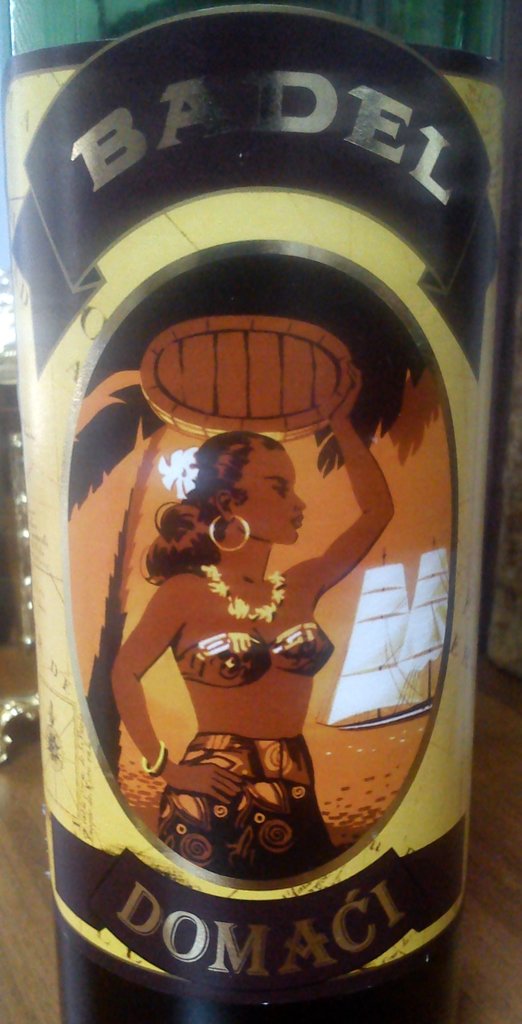
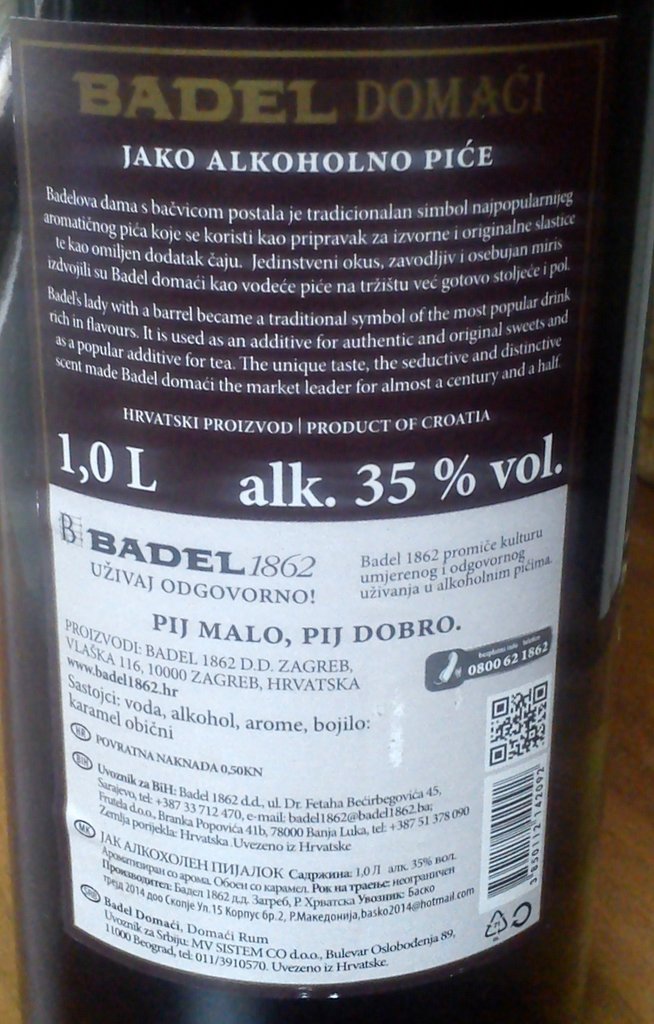 Unsurprisingly it’s mostly for sale in the Balkans — Bosnia-Herzegovina, Croatia, Serbia, with outliers in Germany — and has made exactly zero impact on the greater rum drinking public in the West. Wes briefly touched on it with a review of
Unsurprisingly it’s mostly for sale in the Balkans — Bosnia-Herzegovina, Croatia, Serbia, with outliers in Germany — and has made exactly zero impact on the greater rum drinking public in the West. Wes briefly touched on it with a review of